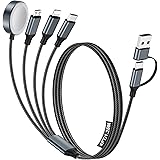Are NZXT Prebuilt Gaming PCs Still a Smart Buy in 2025?
For many aspiring gamers and tech enthusiasts, the allure of a prebuilt gaming PC is undeniable. It offers convenience, professional assembly, and often a warranty that building your own might not. However, the landscape of PC hardware is constantly shifting, and what constitutes a “good deal” one year can quickly become an overpriced proposition the next. As eloquently touched upon in the video above, there’s a growing concern regarding the value proposition of NZXT prebuilt gaming PCs specifically.
The primary issue facing consumers today is navigating the complex world of specifications, price points, and competitive offerings to ensure they invest wisely. The solution lies in a thorough, informed evaluation of current market trends, component comparisons, and a keen understanding of what truly defines value in a prebuilt system. This guide aims to expand upon the video’s insights, providing a deeper dive into whether NZXT’s current offerings stand up to scrutiny.
Evaluating NZXT Prebuilt Gaming PCs: A Closer Look at Specifications
The video highlights a critical point of concern: the specifications of current NZXT prebuilt models, particularly the Player One. Let us dissect these components and their implications for gaming performance and future-proofing. The configuration mentioned includes an RTX 3060, a 13th Gen Intel Core i5 processor, and 16GB of “slow” DDR5 RAM. While on paper these might sound reasonable to an intermediate user, the devil lies in the details and the overall synergy of these parts.
The GPU and CPU Combination
The NVIDIA GeForce RTX 3060 remains a capable graphics card for 1080p gaming, and can even handle some 1440p titles at moderate settings. However, its position in the market has shifted dramatically with the introduction of newer generations and increasingly competitive AMD alternatives. Similarly, a 13th Gen Intel Core i5 processor is a robust CPU, perfectly adequate for gaming and general computing tasks. Yet, its true potential can be hampered by other system bottlenecks, much like a high-performance engine paired with a restricted exhaust system.
The Crucial Role of RAM Speed
Perhaps the most significant red flag raised by the video is the inclusion of “slow DDR5” RAM. This detail is often overlooked by consumers but has a substantial impact on overall system performance. DDR5 memory, by its nature, offers higher bandwidth and faster speeds than its DDR4 predecessor. However, the term “slow” implies a lower clock speed (e.g., 4800MHz compared to 6000MHz or higher) and potentially higher latencies (CL). A gaming PC relies heavily on the CPU’s ability to quickly access data from memory. If the RAM is slow, it creates a bottleneck, preventing the powerful CPU and GPU from operating at their peak efficiency. It’s akin to having a super-fast car on a congested highway; its top speed doesn’t matter if traffic prevents it from accelerating.
Furthermore, memory capacity plays a vital role. While 16GB of RAM is generally sufficient for most modern games, demanding titles, heavy multitasking, or future-proofing considerations often benefit from 32GB. The video’s observation of competitors offering double the RAM for less cost underscores a significant value disparity here.
Pricing and Value: How NZXT Compares to the Competition
The core of the issue, as the video suggests, is the pricing of NZXT gaming PCs. When a competitor like ABS can offer a system for $100 less, featuring double the RAM (32GB), a better CPU, and the same RTX 3060 GPU, it raises serious questions about NZXT’s current market strategy. This isn’t merely a minor price difference; it represents a substantial gap in the value proposition.
Consider the cumulative impact: a better CPU often translates to smoother gameplay, faster load times, and superior performance in CPU-intensive tasks. Double the RAM provides a larger buffer for applications and prevents stuttering when running multiple programs. Paying less for demonstrably superior components is a clear indicator that NZXT’s current configurations may be “overpriced and underpowered” relative to the alternatives available from other system builders.
The Shifting Sands of the Prebuilt Market
The prebuilt PC market is a highly dynamic environment. During periods of component shortages, like those experienced in the early 2020s, NZXT was often lauded for offering decent deals, providing gamers with access to hard-to-find GPUs at reasonable prices. However, those market conditions have largely normalized. Today, consumers benefit from a more stable supply chain and increased competition, leading to more aggressive pricing from various builders. This shift demands that companies like NZXT adapt their pricing and component choices to remain competitive, a move that the current offerings seemingly have not yet fully embraced.
The “Rental PC” Program: A Point of Controversy
The video briefly touches upon NZXT’s “rental PC thing,” which refers to their “NZXT BLD Subscription” service. This program allowed users to rent a gaming PC on a monthly basis, with options to upgrade or eventually own the system. While the concept might appeal to some who prefer flexibility over outright ownership or have budget constraints, it has also garnered its share of scrutiny.
Critics often point to the long-term cost of such subscriptions, which can quickly exceed the purchase price of the equivalent hardware. Furthermore, the perceived value can be diminished by the rapid depreciation of PC components. This model, while innovative, requires careful calculation to ensure it aligns with an individual’s financial and upgrade goals. For most users seeking long-term ownership and the best value, outright purchase from a competitive vendor typically remains the more economically sound choice.
Making an Informed Decision: Beyond the Brand Name
Ultimately, the decision to purchase an NZXT prebuilt gaming PC or any prebuilt system should always be based on a diligent assessment of several key factors:
- Component Lineup: Scrutinize every component. Don’t just look at the model number of the CPU or GPU; investigate the specific speeds of RAM, the power supply unit (PSU) rating, and the type of storage (NVMe SSD vs. SATA SSD).
- Price-to-Performance Ratio: Compare the total cost of the system against its expected performance and the cost of similar systems from multiple reputable competitors. Tools and reviews from independent tech channels are invaluable here.
- Warranty and Support: Understand the warranty terms, return policies, and the quality of customer support. While not directly related to performance, these factors contribute significantly to the overall ownership experience.
- Upgradeability: Consider the motherboard’s chipset, the PSU’s wattage, and case space for potential future upgrades. A good prebuilt should offer some headroom for future enhancements.
The era when a specific brand name guaranteed superior value or performance across the board is largely in the past. Today’s market demands that consumers act like savvy shoppers, comparing every facet of a potential purchase. While NZXT has a history of delivering solid products and has been a respected name in PC building for years, current market dynamics, as highlighted, suggest that their prebuilt offerings may not be the most compelling option for value-conscious gamers in 2025.









